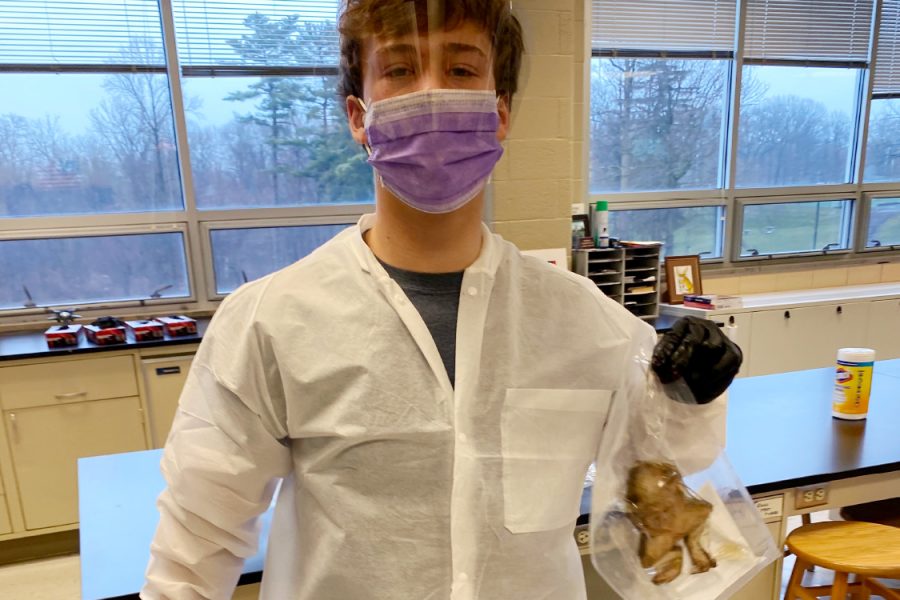Not fake news, but fake frogs
Science teacher provides her view on dissection
Senior Cam Clark shows off what will soon be cut up.
Two students peer over a frog splayed on its back. One places his knife on the breast bone to make the first cut. The other student makes note of the organs that are immediately visible and helps expose the rest of the unfortunate frog’s innards to the air.
But now, thanks to a startup called SynFrogs that produces realistic, synthetic frogs, that typical science class activity doesn’t have to involve a reptile that ate flies, jumped from lily pad to lily pad and did other frog-type things.
One school in Florida has made use of the faux frogs in place of preserved yet dead ones, in an effort to help some students adjust to slicing into a former living organism.
Anatomy teacher Mrs. Sue Mills said that dissection serves as the groundwork as a groundwork for understanding anatomy. She said, “I would be up to trying (synthetic frogs) out if the experience and organs and anatomy were similar. I’m all about saving frogs and animals.”
One major reason to use synthetic frogs is due to a harmful fungus leading to a sharp decrease in frog populations.
Mills said that of all the animals that are dissected in her class, it would make the most sense to use synthetic frogs. Some animals, like rabbits and sharks can be farmed. The cats that are are displayed during Open House have been put to sleep and their bodies are used for science instead of going to waste.
It is essential that the anatomy be as close to an organic animal as possible. Mills said that while there are other programs that don’t use formerly living animals, like virtual dissections, they’re largely insufficient. “It’s just not the same,” said Mills.
Junior Meghan McCarthy, an Anatomy II student, shared Mills’ view. “I would be open to using the (synthetic) frogs as long as they were pretty close to the real thing.” She also said that you may not always have a synthetic dissection option so “it’s good to be prepared” to operate on the real thing.
One drawback to the synthetic frogs, Mills said, was the cost. Frogs from SynFrogs go for $150 each. “We could get about two for the same price we can get for a whole class,” Mill said.
As more schools transition to a more eco-friendly mindset, the price of the synthetic frogs is likely to drop. It a couple of years, it may not be too uncommon for the slimy thing in front of you to be made in a factory.

Andrew de las Alas is a senior and reporter for the Megaphone. He runs varsity cross-country, is co-captain of the speech and debate team and co-president...

Will Browning is a senior and a photographer. He is part of the Holy Cross Council, Student Life Council and the Service Learning Council. He is a pole...







